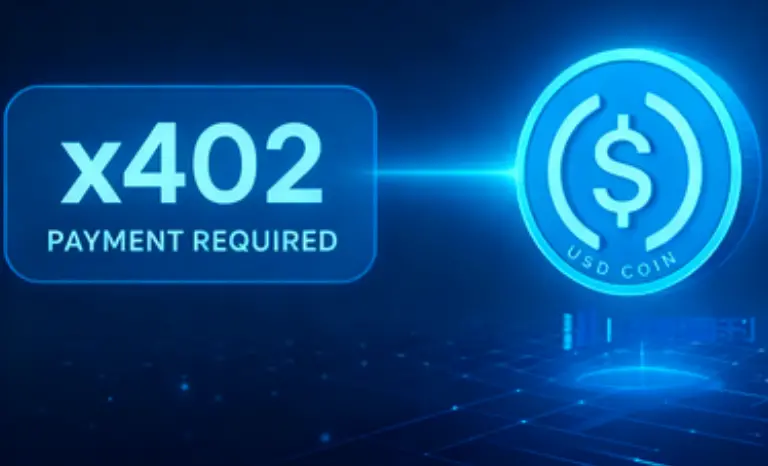Will the market perform best in the last two months of this year? Should we rush in now or exit?
If the four-year cycle theory is dead, how much further can bitcoin rise in this round?
As October draws to a close, the crypto market seems to be showing some upward momentum.
Over the past two months, "caution" has almost become the main theme of the crypto market, especially after the massive crash on October 11. As the impact of this crash gradually fades, market sentiment does not seem to have worsened further; instead, there is new hope.
Starting from late October, some bullish signals have gradually emerged: net inflows have turned positive, batches of altcoin ETFs have been approved, and expectations for interest rate cuts are heating up.
ETF Funds Flow Back, Institutions Re-enter the Market
The most eye-catching data in October comes from ETFs.
Bitcoin spot ETFs saw a cumulative net inflow of $4.21 billion this month, completely reversing the $1.23 billion outflow trend in September. Assets under management have reached $178.2 billion, accounting for 6.8% of bitcoin's total market capitalization. Looking at the week from October 20 to 27 alone, $446 million in new funds flowed in, with BlackRock's IBIT alone accounting for $324 million, and its holdings now exceed 800,000 BTC.
For traditional financial markets, ETF inflows are the most direct bullish indicator—they are more honest than social media hype and more real than candlestick charts.
More importantly, this round of gains truly carries an "institutional flavor." Morgan Stanley has opened BTC and ETH allocations to all wealth management clients; JPMorgan now allows institutional clients to use bitcoin as loan collateral;
According to the latest data, the average institutional allocation to crypto assets has risen to 5%, a record high. Moreover, 85% of institutions say they have allocated or plan to allocate to crypto assets.
Although compared to bitcoin spot ETFs, ethereum ETFs appear somewhat lackluster. In October, they saw a cumulative net outflow of $555 million, the first consecutive net outflow since April this year, mainly from ETH funds under Fidelity and BlackRock.
But this also seems to be a new signal, indicating that funds are rotating from ETH to BTC and SOL, which have greater upside potential, or perhaps preparing for new ETFs.
A Large Batch of Altcoin ETFs Arrives
On October 28, the first batch of US altcoin ETFs officially launched, covering three projects: Solana, Litecoin, and Hedera. Bitwise and Grayscale launched SOL ETFs, while Canary Capital's LTC and HBAR ETFs were also approved for trading on Nasdaq.
But this is just the beginning.
According to reports, there are currently 155 altcoin ETFs awaiting approval, covering 35 mainstream assets, with a total scale expected to surpass the initial inflows of the first two rounds of bitcoin and ethereum ETFs.
If all are approved, the market may experience an unprecedented "liquidity shockwave."
Historically, the launch of bitcoin ETFs has brought cumulative inflows of over $50 billion, while ethereum ETFs have added $25 billion in assets.
ETFs are not just a financial product, but more like an "entry channel" for funds. When this channel expands from BTC and ETH to SOL, XRP, LINK, AVAX, and other altcoins, the entire market's valuation system will be repriced.
Institutions are showing increasing interest in crypto assets.
In addition, ProShares is preparing to launch the CoinDesk 20 ETF, tracking 20 assets including BTC, ETH, SOL, and XRP; REX-Osprey's 21-Asset ETF goes even further, allowing holders to earn staking rewards from tokens such as ADA, AVAX, NEAR, SEI, and TAO.
There are 23 ETFs tracking Solana alone awaiting approval. This intensive deployment is almost a public declaration: the institutional risk curve is extending from bitcoin to the entire DeFi ecosystem.
From a macro perspective, this liquidity expansion has huge potential. As of October 2025, the total global stablecoin market capitalization is close to $300 billion. Once this "liquidity reserve" is activated by ETFs, it will create a powerful money multiplier effect. Taking bitcoin ETFs as an example, every $1 flowing into ETFs can ultimately multiply into several times the market cap growth.
If the same logic is applied to altcoin ETFs, tens of billions of dollars in new capital could drive another boom in the entire DeFi ecosystem.
The Wind of Rate Cuts Brings New Liquidity Again
Besides ETFs, another factor changing the market comes from the much-discussed macro level.
On October 29, the Federal Reserve had a 98.3% probability of cutting rates by 25 basis points. The market seems to have already priced in this expectation, with the US dollar index weakening, risk assets rallying collectively, and bitcoin breaking through $114,900.
What does a rate cut mean? It means capital needs to find a new outlet.
And in a 2025 where traditional markets generally lack imagination, crypto has become the place that is "still telling stories."
More interestingly, this round of bullishness comes not only from the market but also from policy.
On October 27, the White House nominated Michael Selig as CFTC chairman, and this former crypto lawyer has always had a friendly attitude; the SEC also updated the ETP creation mechanism, allowing crypto ETFs to conduct in-kind redemptions, greatly simplifying operations.
On the topic of "regulatory friendliness," the US market is not just loosening up, but opening the door wide. The government is no longer suppressing innovation, but trying to let the crypto industry "exist in compliance."
On-chain data is also confirming all of this in real time.
DeFi total value locked (TVL) grew by 3.48% in October, reaching $157.5 billion. Ethereum chain TVL reached $88.6 billion, up 4%; Solana rose 7%; BSC surged by 15%. This represents not just "capital inflow," but also a return of trust.
In addition, bitcoin futures open interest rose to $53.7 billion, with funding rates positive, indicating bulls are dominating the market. Whale wallets are also increasing their holdings, with a large player buying $350 million worth of BTC in just five hours. In the secondary market, Uniswap's monthly trading volume exceeded $161 billion, Raydium surpassed $20 billion, and ecosystem activity continues to rise.
These on-chain indicators constitute the most hardcore bullish evidence: funds are moving, positions are increasing, and trading is heating up.
Why Are Top Analysts Bullish?
Arthur Hayes: The Four-Year Cycle Is Dead, the Liquidity Cycle Lives On
In a Thursday blog post titled "Long Live the King," Arthur Hayes wrote that while some crypto traders expect bitcoin to soon reach a cycle peak and crash next year, he believes this time will be different.
His core view is: bitcoin's "four-year cycle" is no longer valid, because what really determines the market is not "halving," but the global liquidity cycle—especially the monetary policy resonance between the US dollar and the Chinese yuan.
The past three bull and bear cycles seemed to follow the rhythm of "bull market after halving, a cycle every four years," but that was only superficial. Hayes believes this rhythm held because each cycle happened to coincide with massive expansion of the US dollar or Chinese yuan, ultra-low interest rates, and global credit easing. For example:
2009–2013: Federal Reserve's unlimited QE, China lending aggressively;
2013–2017: Yuan credit expansion drove the ICO boom;
2017–2021: The "helicopter money" era under Trump and Biden brought a flood of liquidity.
And when the credit expansion of these two currencies slowed, bitcoin's bull market ended accordingly. In other words, bitcoin is merely a barometer of global monetary easing.
By 2025, this "halving-driven" logic has completely collapsed. Because the monetary policies of the US and China have entered a new normal—political pressure requires continued easing, and liquidity will no longer tighten cyclically.
The US needs to "overheat the economy" to dilute debt, with Trump pushing for rate cuts and fiscal expansion; China is also releasing credit to combat deflation. Both countries are injecting funds into the market.
So Hayes concludes: "The four-year cycle is dead. The real cycle is the liquidity cycle. As long as the US and China keep printing money, bitcoin will keep rising."
This means that the future crypto market will no longer be dictated by the "halving" schedule, but by the "direction of the US dollar and Chinese yuan." He ends with: "The king is dead, long live the king"—the old cycle has ended, but a new bitcoin cycle dominated by liquidity is just beginning.
Raoul Pal: The 5.4-Year Cycle Replaces the Traditional 4-Year Cycle
Raoul Pal's five-year cycle theory represents a fundamental reconstruction of the traditional four-year bitcoin halving cycle. He believes the traditional four-year cycle is not driven by the bitcoin protocol itself, but is the result of the past three cycles (2009-2013, 2013-2017, 2017-2021) coincidentally aligning with the global debt refinancing cycle.
The end of these cycles was always due to monetary tightening, not the halving event itself.
The key to this theoretical shift lies in the structural change in the average maturity of US debt during 2021-2022. In a near-zero interest rate environment, the US Treasury extended the average weighted maturity of debt from about four years to 5.4 years.
This extension not only affects the debt refinancing schedule, but more importantly, changes the rhythm of global liquidity release, thereby pushing bitcoin's cyclical peak from the traditional Q4 2025 to Q2 2026, which also suggests a recovery rally in Q4 2025.
In Raoul Pal's view, global debt has reached about $300 trillion, with about $10 trillion (mainly US Treasuries and corporate bonds) maturing soon, requiring massive liquidity injections to avoid yield spikes. Every $1 trillion increase in liquidity is associated with 5-10% returns in stocks and crypto. For crypto, $10 trillion in refinancing could inject $2-3 trillion into risk assets, pushing BTC from a 2024 low of $60,000 to over $200,000 in 2026.
Therefore, Pal's model predicts that Q2 2026 will witness an unprecedented liquidity peak. When ISM breaks above 60, it will trigger bitcoin to enter the "banana zone," with a target price of $200,000 to $450,000.
Disclaimer: The content of this article solely reflects the author's opinion and does not represent the platform in any capacity. This article is not intended to serve as a reference for making investment decisions.
You may also like
Interview with Bittensor Founder Jacob: Applying Mining to AI, Top 3 Subnets Built by Chinese Teams
Bittensor is migrating Bitcoin-style mining to AI through "incentivized computation," building an open multi-subnet marketplace powered by TAO, where inference, training, and computing power providers are rewarded based on performance. Jacob visited China for the first time, discussing his experience leaving Google, ecosystem expansion in Asia, TAO halving, protocol revenue, and his five-year vision.

Why is a crypto treasury a better solution compared to spot ETFs?
DAT's corporate structure possesses unique advantages that ETFs cannot match, which is precisely why it commands a premium over its book value.

x402 goes viral, AI Agent trading volume surges 100x—How does AEON become the crypto settlement engine in the era of AI autonomous payments?
x402 ignites the AI payment revolution as AEON takes the lead in bringing it to global commerce.


